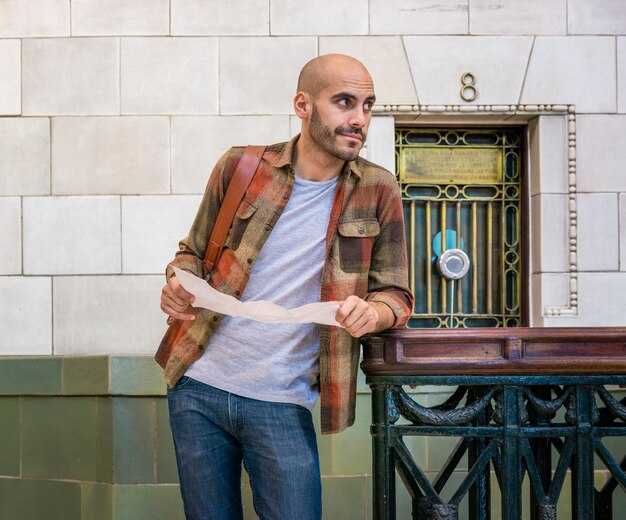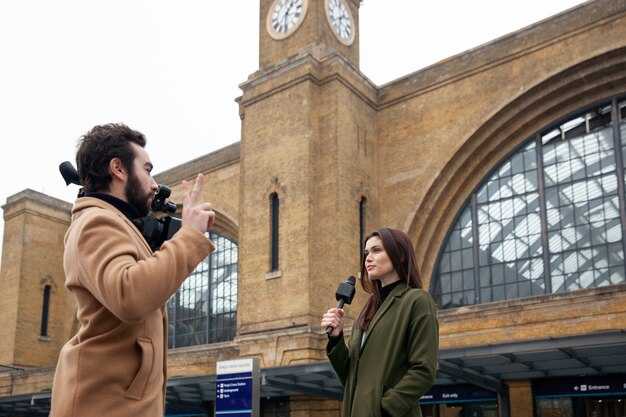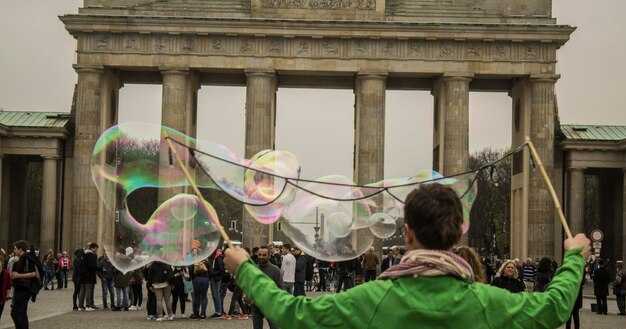Pergamon Museum on your first day in Berlin is the best opener. Book a timed-entry ticket online to avoid lines, and plan for 2–4 hours to absorb the main highlights. The site typically opens around 10:00 and closes by 18:00 on most days, with occasional late hours on special evenings–check the official page before you go.
Why Pergamon and nearby sites make sense Located on Museum Island in the heart of Berlin, these sites form a cluster, famous for their monumental architecture and for offering a compact overview of ancient civilizations. The Pergamon and Neues Museum are the most popular ones, but the Altes Museum and the Alte Nationalgalerie also showcase wonderful classical and neoclassical works, including roman sculptures from late antiquity, providing balance between antiquity and 19th-century art. Expect crowds; come early, especially on weekends, and use the BVG app to navigate between sites.
For expressionism and modern appetite, include Brücke Museum and Hamburger Bahnhof These options offer a vivid counterpoint to the classical collections. The Brücke Museum in Dahlem houses a concentrated expressionism collection, with works by Kirchner, Heckel, and Nolde, while Hamburger Bahnhof in the Moabit district showcases contemporary art and much new media. If you want a broader view of the period outside the typical tourist route, both are worth the ride; look for french influences in early 20th-century German art and notice how visitors compare various approaches to form.
Buy a city-pass or use a multi-museum plan means you can save time and money on transit and admissions. An illuminating route connects ancient artifacts with modern art, so you can see how ideas evolved. With a single ticket you can expect about €12–€20 for major museums; a Berlin WelcomeCard often includes transit discounts and potential museum reductions. Outside peak hours, you’ll find shorter lines, and student or senior rates apply at many venues. Keep a rough schedule, and reserve a couple of hours for a relaxed café break in between visits.
Outside Museum Island, diversify with other iconic venues Keep exploring across the city such as the Jewish Museum Berlin and the DDR Museum for hands-on history, both located within easy public-transport reach. Berlin, one of many cities with rich museum scenes, makes it easy to combine sites and plan a route that balances architecture, design, and narrative. These venues offer balance between design-forward architecture and interactive displays, helping you compare various storytelling approaches. Berlin’s transit network makes it simple to hop from one district to another, so you can see much more in a single weekend.
Plan smart, adapt to what you love and stay flexible. There is something for everyone, from ancient artifacts to contemporary installations. Berlin’s museums are famous for thoughtful signage and clear room labels, which helps you keep moving without missing highlights. Start early, pace yourself, and finish with a compact route that ties together ancient sites with modern art–making your visit efficient and rewarding.
Berlinische Galerie: must-see works, collection scope, and why it tops the 2025 itinerary
Start with a well timed visit to the Berlinische Galerie to set a clear pace for your day: come for a focused dive into Berlin’s modern culture, then walk to adjacent museums for a fuller picture. The layout invites a straightforward walk through decades of art and urban life, making it ideal for museum-hopping in a single morning or afternoon.
The collection houses painting, sculpture, photography, and architectural studies that trace Berlin’s visual culture from the late 19th century to today. It found its strength in urban life, street photography, and the city’s postwar and contemporary scenes. The gallery houses notable works by andy warhol, connecting the city’s local culture to global movements, and it highlights generations of local artists who shaped Berlin’s image. Some pieces nod to byzantine iconography and hellenistic motifs in graphic sequences, underscoring cross-era dialogue. The digital, time-based works and simulations expand the conversation beyond static objects. The museum, home to diverse voices, should be seen as a compact, coherent lens on the city’s creative development.
Compared with the Pergamon museum cluster, the Berlinische Galerie offers a tighter, city-centered arc and easy access from a central transit hub, so theyre a practical pairing for a day of culture. For a well timed itinerary, start here, then walk to nearby institutions or return later in the day if a favorite show draws you back. Those choices let you compare how local artists and international movements speak to Berlin’s past and present, and they’re particularly effective when planning a flexible home base for a short visit.
Highlights you should not miss
- andy warhol pieces, including iconic prints and portraits that anchor Berlin’s pop dialogue within a European context
- city documentary photography and street scenes that capture everyday life and urban change
- sculptures by local artists that map postwar and contemporary experimentation
- architectural studies and design objects that reflect Berlin’s built environment
- references to byzantine iconography and hellenistic forms in graphic works, illustrating broad historical conversations
- digital prints and simulations that bring media art into the present tense
- clear links to broader city culture, offering comparison points with pergamon and nationalgalerie
- accessible spaces and short gallery routes that suit every visitor, from solo travelers to groups
Practical tips for planning your visit
- Budget 60–90 minutes for a focused gallery tour, more if you want to linger with a favorite series
- Come on a weekday morning or late afternoon to minimize crowds and maximize time for reflections
- Check current exhibitions online and plan your route to include photography, painting, and sculpture blocks
- Pair the visit with a stroll through nearby streets or a riverside walk to extend the local culture feel
- Use public transit; the museum is easy to reach and pairs well with a visit to nationalgalerie or pergamon for a broader city narrative
- Look for conversations between past and present works to understand how artists reinterpret urban life across decades
- Take advantage of café breaks or seating corners to gather impressions before moving to the next stop
Ticketing and hours: timing your visit, passes, and line-skipping tips
Buy timed-entry tickets online 24–48 hours ahead to secure a slot and skip the longest wait. youd pick a time that fits your rhythm, especially if you plan a visit to kunstgewerbemuseum, where the collections span decorative arts and modern design. Use the official onlinebook to lock in a precise window and, if you want, add a guided component for a deeper look at the gallery highlights. A typical visit lasts 2–3 hours, leaving time for a riverside stroll below the bridges or a quick coffee nearby.
Hours and planning basics help you maximize time. Most Berlin museums run 10:00–18:00, with some staying open until 20:00 on Fridays; check the exact hours on each site. Keep in mind that kunstgewerbemuseum often closes on Mondays, so aim for Tue–Sun. If the forecast shows rainy weather, map a compact indoor loop that covers monuments and the riverfront, then pause at a nearby cafe. For a family visit, schedule two-hour blocks, and though youre traveling solo or as a single traveler, you can still experience the best parts with a streamlined route. If you have a particular interest in 20th‑century design, the kunstgewerbemuseum offers intriguing displays that pair well with a stroll through nearby galleries and capitals of culture around Potsdamer Platz, including a quick stop at a cinema or an italian place for a post‑visit bite, and a loop that reaches the eastern gallery sections. theres always documented history tucked into every exhibit and you can read a concise book summarizing the collection before you go. See below for a quick two-site plan to get the most out of your day.
Passes and line-skipping strategies. Most venues offer single tickets and family tickets; student reductions exist in some cases. Some passes cover multiple sites or include transit, which can be a smart buy if you plan to visit several museums in a day. Always double-check what’s included and whether you must reserve an entry time for each venue. On the kunstgewerbemuseum page there’s a clear breakdown and an easy link to the onlinebook portal to lock your entry. If you want to discover works by designers such as paul or ludwig – you’ll see their names pop up in the eastern gallery sections – plan a compact route that ties these pieces to the city’s broader design history. Below is a suggested two-site plan that fits a busy morning or afternoon.
Practical day plan and quick tips. Arrive early to beat crowds, especially on weekends when the best rooms fill up fast; keep your bag small because some sites restrict access. If you visited berlin before, you know how convenient it is to center a day around a couple of connected venues in the Kulturforum, with a stroll along the river and a bite at a n italian cafe nearby. The ubiquitous signage and staff help you stay on track while you focus on highlights, and you can use a short onlinebook or printed guide to sharpen your focus. A two‑ to three‑hour block per site works best for most visitors, though you can stretch if you’re keen on a particular collection. If you’re traveling with family, look for kid-friendly corners, short shows in the cinema, and hands-on displays; this keeps younger visitors engaged and makes the outing equally rewarding for the adults. In sum, plan with a clear list of what you want to see and keep a flexible back-up option; you’ll leave with a richer, more relaxed impression of Berlin’s best museums.
Family-friendly and accessibility: kid-friendly exhibits, facilities, and mobility access

Start with the DDR Museum Berlin for a hands-on intro that kids remember; interactive displays, model trains, and a recreated living room engage little visitors, and claudia, a family guide, notes that history becomes tangible when kids touch and compare.
Choose museums with clear signage, wide ramps, elevators, and wheelchair-accessible restrooms. At the information desk, request a personal audio guide or a tactile map to help arrive and move through the section comfortably.
Family-friendly facilities include stroller parking, nursing rooms, kid-friendly food options in the cafés, and play corners near the main halls. Many museen offer quick breaks with beverages and simple snacks, so you can balance a day of exploring with a short break before the next exhibit.
For a balanced day, visit a mix: DDR Museum, Museum für Naturkunde with impressive fossils and interactive stations, and Pergamon Museum with byzantine and auguste-era artifacts and classic sculptures housed in buildings that resemble a cathedral. The beautiful exterior and the well-lit interiors help kids feel the scale without getting overwhelmed, and staff can point out accessible routes between sites.
When topics turn to Nazi history and wartime facts, pick sections that present context-friendly explanations with personal stories; these spots avoid sensationalism while providing a clear view of the era through reliable facts. If a topic feels heavy for younger children, switch to another exhibit and plan to return to those Nazis-era themes on a later visit, either within Berlin or elsewhere in the city.
Plan to arrive early to enjoy smoother lines, and check which sites stay open late on certain nights in a given month. A compact, walkable area around the cathedral district lets you spot beautiful buildings between stops, and you can end the day with a kid-friendly bite of food at a nearby cafe before returning to your hotel, keeping the section of your itinerary compact and enjoyable.
Smart itinerary: how to pair Berlinische Galerie with nearby museums in one compact day
Begin at Berlinische Galerie at 10:00, then walk 15–20 minutes to the Jewish Museum Berlin for a 60–75 minute visit; claudia, interested in modern and historic spaces, often enjoys this contrast and returns again for a second look.
From there, use transportation to the Historisches Museum der Stadt Berlin on Unter den Linden for a 90-minute deep dive into Berlin’s past, with immersive displays that pair well with the contemporary works you just saw. The two stops create a vibrant arc from classical architecture to bold modern forms, a pattern fans of both eras appreciate.
Finish the trio with a reflective moment at the Memorial to the Murdered Jews of Europe (memorial), then stroll to a nearby cafe for lunches and quick pauses before you head home. This final stretch helps you stay energized while keeping the day compact and doable in germanys capital.
To maximize your time, purchase tickets online to skip lines and plan around peak hours; a bundled or combined option can trim the cost and keep you moving without backtracking. If you are new to Berlin, maps and offline guidance via esims keep your route clear, especially when the weather shifts or you want to cut a stop if you’re pressed for time; the five stops in this loop are easy to manage with a flexible itinerary that suits both casual visitors and serious art fans.
The route suits people who want a classical-to-contemporary progression and a cool, compact day in a single neighborhood. Claudia and her friend Ludwig often map this sequence, using a single transportation pass to stay efficient, cost-conscious, and ready for spontaneous detours to small galleries or a quick snack at a cafe along the way.
Transit tips
Use a straightforward transportation plan: walk when the distance is short, otherwise hop a quick U‑Bahn or tram across a short stretch. Buy a day pass to stay flexible and avoid buying multiple tickets; download offline maps and keep your esims active for live updates and station cues. This way, you’ll skip unnecessary backtracking and keep the pace steady without fatigue.
Lunches and wrap-up
Choose a cafe near the Historisches Museum or the memorial for a relaxed lunch; a five‑to‑ten minute stop lets you refuel before the final leg back to the hotel or station. If you’re still curious after the loop, you can add a quick look at a fifth nearby space on a return visit, but this compact plan already delivers a strong narrative: modern collection, historic context, and a moment of remembrance in one concentrated day.
Costs, passes, and savings: prices, free days, student and group discounts for Berlin museums

Purchase tickets online in advance to skip the lines and streamline planning. A smooth start helps you hit more highlights without wasting time.
Adult single-ticket prices for most Berliner museums typically range from about €12 to €22, with permanent collections usually toward the lower end and special exhibitions pushing the price higher. Student and concession tickets commonly fall in the €6–€10 range, while seniors and some groups may see similar reductions. Children under 18 often benefit from entryfree, but always confirm the exact policy on the museum’s official page before you purchase.
Consider a Berliner Museums-Pass if you plan to visit 2–4 museums within a short window; such passes cover several state institutions and can save time and money when you plan your route. Expect multi-day options to run roughly €30–€60 depending on duration and included sites. The Berlin WelcomeCard adds transportation coverage and discounts on many venues, which is especially convenient for tourist itineraries around Potsdamer Platz and other central spots. For a whole family day, these passes can simplify logistics and reduce total expenses when you pair them with smart ticket choices.
Some museums offer entryfree on specific days or for particular groups; verify policies on the official pages and use the provided links to confirm current details. If you’re traveling with a group or as a student collective, ask about group discounts and any available family pricing to maximize savings.
Tips: plan a route that balances permanent collections with selected temporary exhibitions to avoid overload; a hands-on, diverse mix keeps children engaged while adults enjoy the architectural spaces. Early starts help you beat crowds, and purchasing tickets online lets you skip the ticket desk at the entrance. If you’re moving between venues, transportation options can dramatically shorten your day–check whether your pass includes transit to keep the schedule tight and comfortable for everyone in the family, berlner or tourist alike.
Hidden gems appear outside the biggest names, so include a couple of lesser-known museums in your list to broaden the experience without crowding. A well-rounded day can still feel relaxed if you group nearby venues–the Potsdamer area hosts several options within easy walking distance, reducing travel time and enabling a fuller, more enjoyable program of activities.
Auguste and Pablo might pop up in catalog notes or thematic displays; if you encounter such references during planning, use the official pages to confirm what’s on view and whether a combined ticket covers the exhibition. A golden rule for families and solo visitors is to purchase tickets early, consider a pass when you plan multiple visits, and rely on the official links to verify entryfree policies, opening hours, and any time-slot requirements so your day runs smoothly from start to finish.



Коментарі